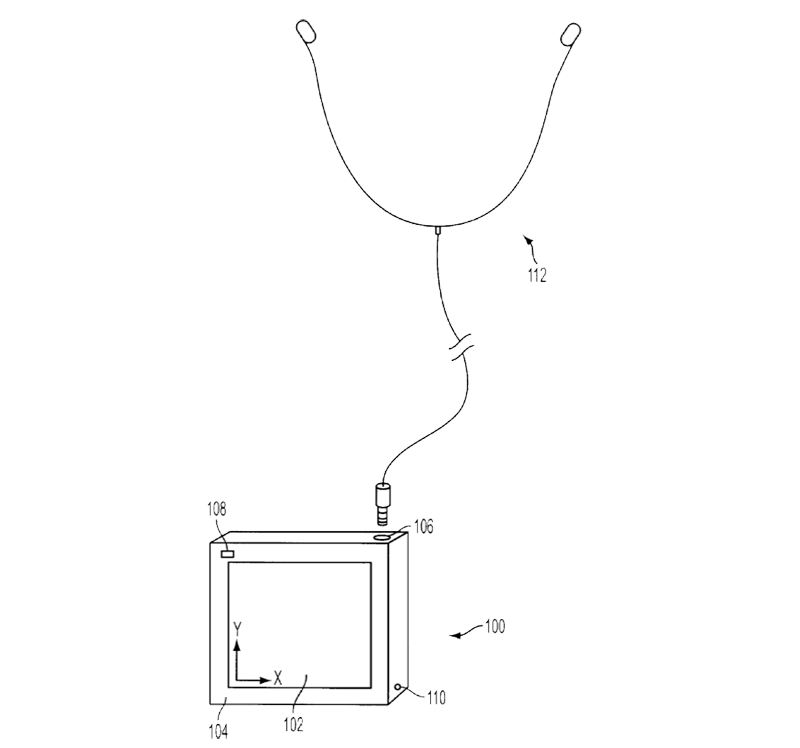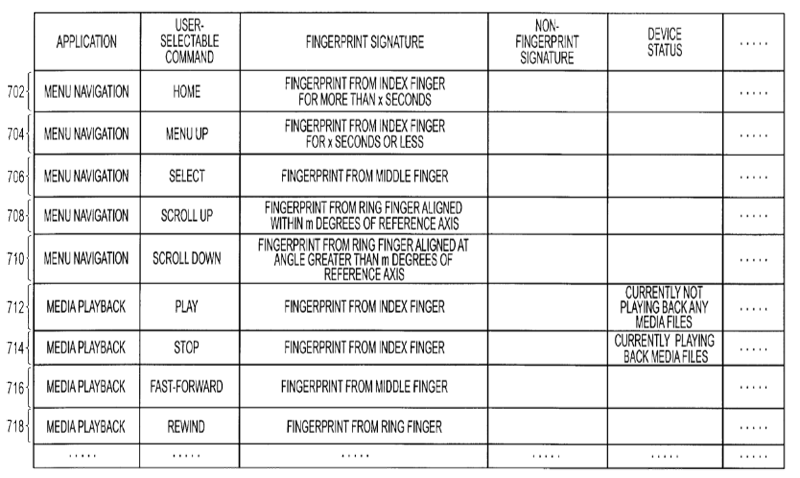More specifically, the filing lodged with the United States Patent and Trademark Office by iPod grandfather Anthony Fadell last year, outlines multi-touch software that can store user input signatures, including various fingerprint signatures, each of which can be assigned to trigger a certain task or event.
"Many conventional electronic devices may incorporate user interfaces that require a user to look at the interface in order to interact with it," Apple wrote in the filing. "Unfortunately, in some situations, a user may not be able to or it may not be safe for the user to do so. For example, a consumer may not be able to look at a user interface while the user is performing some activities (e.g., driving or exercising).
"Furthermore, as people become increasingly active and mobile, they are demanding increasingly smaller electronic devices. The design of smaller devices can be limited, however, by user interfaces that require numerous user input mechanisms to provide an appropriate scope of user interaction with the devices."
Put simply, Apple's proposal calls for iPods and iPhones to store unique compositions of a user's fingerprints as fingerprint signatures, which can, in turn, be associated with user-selectable commands. Similar to a multi-touch gestures, a user would provide a composition of fingerprints to the devices that match one of the fingerprint signatures they've pre-configures, at which point the device would initiate the associated command.
"A composition of fingerprints can comprise a group of one or more fingerprints," Apple says "This can include, for example, a fingerprint from one finger or fingerprints from multiple fingers. A composition having multiple fingerprints can include, for example, fingerprints obtained from a user pressing one finger multiple times to a fingerprint sensor or by a user pressing different fingers to one or more fingerprint sensors."
User-selectable commands could also be associated with a user input signature that has both a fingerprint signature and a non-fingerprint signature. By this way, multi-touch devices can be configured to initiate the user-selectable command after it detects and matches user input to the associated fingerprint signature and non-fingerprint signature. The non-fingerprint signature can include, for example, verbal input, a conventional button input, or input on a multi-touch interface.
Compared to conventional device that require a user to initiate user-selectable commands by manipulating a button or dial, the present invention can reduce and, in some cases, eliminate the need for a user to look at a device's user interface in order to interact with and control the device, Apple adds. "Furthermore, the present invention can reduce the size of an electronic device by replacing a plurality of conventional user input mechanisms (e.g., buttons and/or dials) with a fewer number of fingerprint sensors."
The iPhone and iPod maker also notes thats a user's fingerprints can also be used for authentication purposes, in addition to controlling operation of the device. A chart, seen above, was included with the patent filing demonstrates the registration process to associate unique compositions of a user's fingerprints with user-selectable commands, which comprises the basis of the Apple's proposal.
 Sam Oliver
Sam Oliver





-xl-m.jpg)


-m.jpg)






 William Gallagher
William Gallagher
 Malcolm Owen
Malcolm Owen

 Mike Wuerthele
Mike Wuerthele


 Thomas Sibilly
Thomas Sibilly
 Wesley Hilliard
Wesley Hilliard







9 Comments
Big Brother "1984" scary. *adjusts tin foil hat*
How about some fancy control that keeps the screen from rotating when you are lying down using your iPhone...?
The coolness keeps piling on.... in who knows how long though
Big Brother "1984" scary. *adjusts tin foil hat*
Not really. In 1984, the iPod would tell YOU what to do and be watching you! :>)
This sounds like a way to program, using just your fingers. A "secret knock" sort of thing that could be unique for each user. Tap twice with the ring finger to dial the wife. Tap once with index and once with ring to start playing music. This sounds great!
I look forward to Safari not locking in 3.?